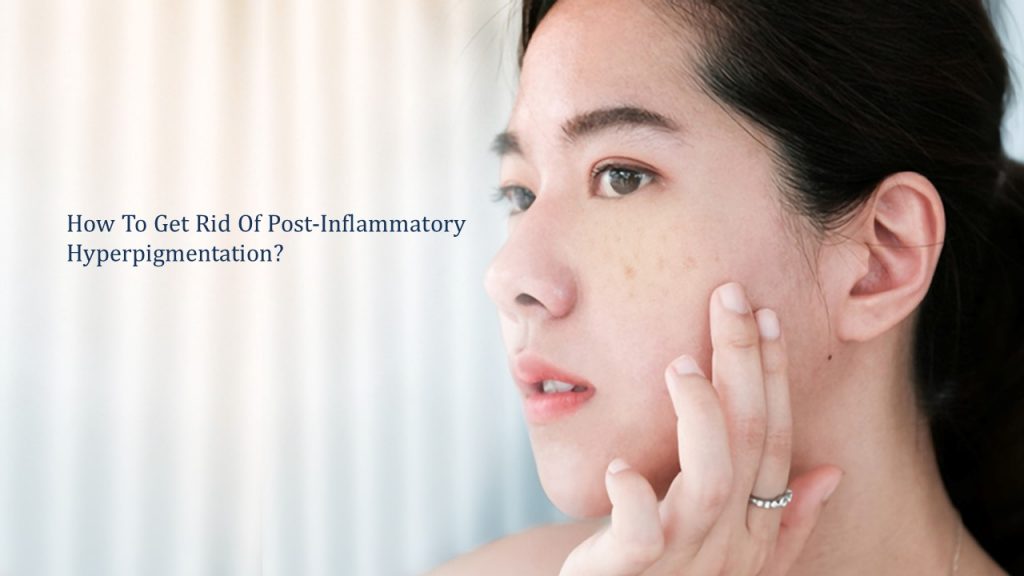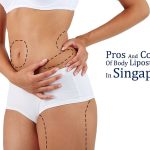Those dark spots or marks on the skin, specifically over the face, have a major impact on your self-esteem and confidence. It will lead you to feel shy and embarrassed about going out or interacting with people. It interferes with the quality of life, and the individuals go under some major psychological distress.
Skin pigmentation is a very common skin condition mostly found in the Asian population due to increased melanin pigment in their skin layers. Post-inflammatory hyperpigmentation is one of its kind, one that follows an injury or inflammation.
Though post-inflammatory hyperpigmentation is not associated with any morbidity or serious disease, many people still need treatment due to cosmetic reasons. There are multiple treatments for post-inflammatory hyperpigmentation in Singapore, out of which a few will be discussed below.
The most common treatment that offers safe and effective long-term results is the laser for post-inflammatory hyperpigmentation in Singapore. It is one of the most talked-about treatments that have minimal side effects and offers positive results that sometimes might be permanent.
How Is Post-Inflammatory Hyperpigmentation (PIH) Different From Other Types Of Pigmentation
Before we talk about post-inflammatory hyperpigmentation and its treatment, it is essential to differentiate between the types of pigmentation.
The significant difference between post-inflammatory hyperpigmentation and other skin pigmentation types is that a patient suffering from post-inflammatory hyperpigmentation will present with a history of skin injury or inflammation. On examination, the physician will notice that the dark-colored patches on the same area which was previously injured, and, unlike other cutaneous conditions, it usually gets better as the inflammation resolves. If the inflammatory environment persists, they may find erythematous nodules and plaques.
What Is Post-Inflammatory Hyperpigmentation
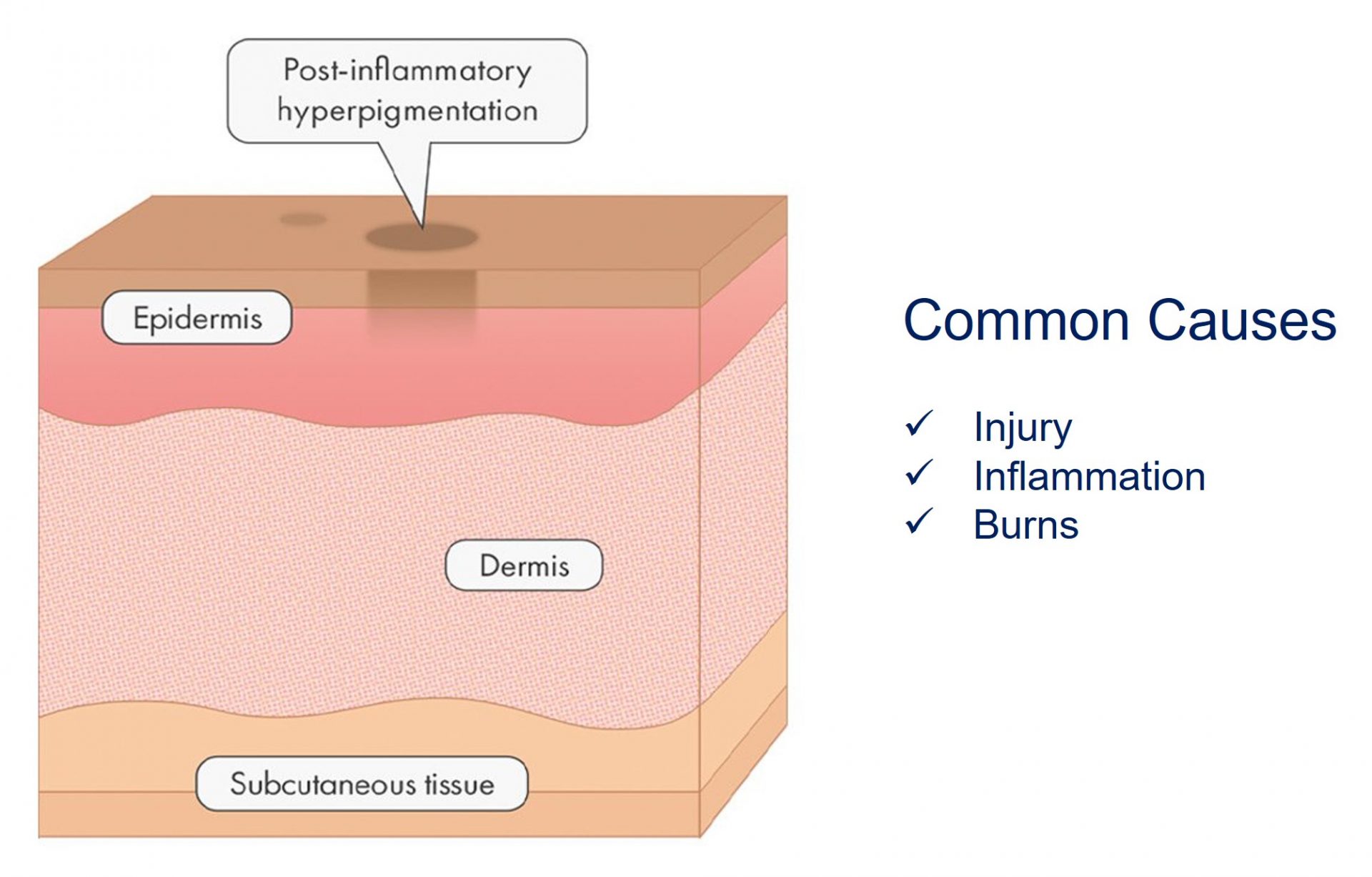
Melanin pigments determine the color of our skin. The more melanin means, the darker the skin color will be. In pigmentary disorders, there is either a disturbed distribution or increased pigment production, which results in dark-colored spots or patches anywhere on the face or body.
When we talk about post-inflammatory hyperpigmentation specifically, it occurs irrespective of age or gender though more common in Fitzpatrick skin types III-VI. Whenever the skin is injured or an inflammatory condition is triggered, such as after a burn or exposure to radiation, a visible discolored patch can be noticed at the very same area.
A common pimple or rash may also trigger post-inflammatory hyperpigmentation. Inflammatory cells may stimulate the production of melanin pigment in the skin layers by causing hypertrophy and increased activity of the melanocytes. In case the injury is severe, and the deeper layers of skin are inflamed, the excessive deposited melanin is phagocytosed, which causes permanent discoloration.
What Does Post-Inflammatory Hyperpigmentation Look Like?
It is a flat, surface-level discolored area that may be pink, red, purple, brown, or black, depending on the skin tone and severity of inflammation. They are either small freckle-like spots or large patches on the skin.
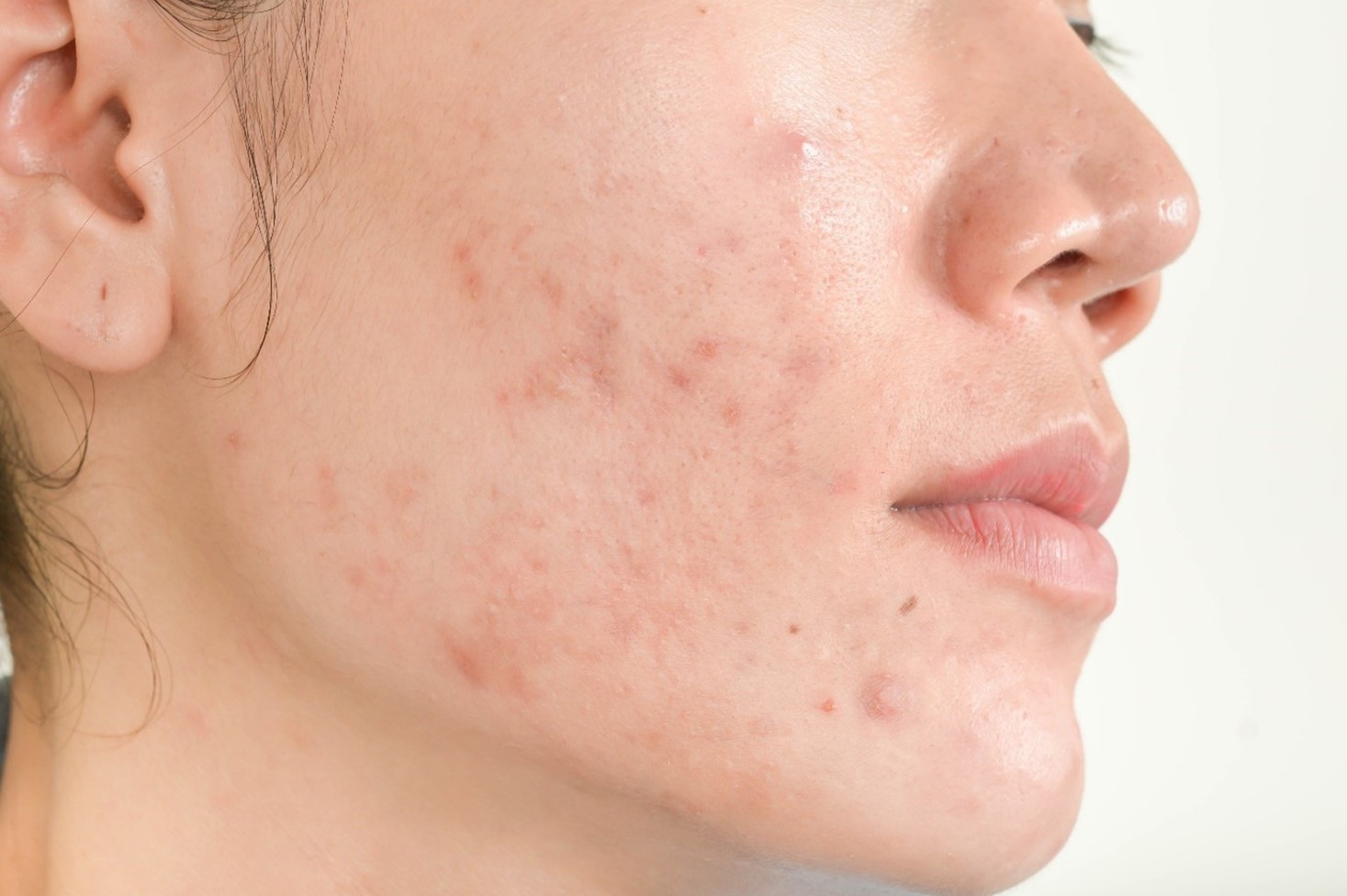
What Causes Post-Inflammatory Hyperpigmentation
Post-inflammatory hyperpigmentation is highly related to medical and skin conditions like allergic reactions, trauma, infections, etc. Sometimes using the wrong laser on the skin may also cause inflammatory pigmentary disorder such as Fractional laser photo-thermolysis is commonly associated.
Other causes of post-inflammatory hyperpigmentation include:
- Burns
- Fungal infections
- Dermatitis
- Mechanical injury
- Insect bite
- Psoriasis
- Laser therapy or resurfacing
- Cryotherapy
- Sunburn
Will Post-Inflammatory Hyperpigmentation Resolve On Its Own?
Post-inflammatory hyperpigmentation usually recedes on its own, but the time varies depending on the severity and the color difference. The darker the patch is, the longer it will take to resemble the normal skin tone. It takes an average of 3 to 24 months to resolve completely.
If the melanin is deposited in the deeper dermis, it might end up being permanent.
Treatment Options For Post Inflammatory Pigmentation
The process of healing post-inflammatory hyperpigmentation is time-consuming, and it takes months for the discoloration to resolve. At times, the patch may not completely disappear, and it leaves the patient devastated. To resolve this, multiple treatments for post-inflammatory hyperpigmentation in Singapore have been introduced, including topical and laser treatments.
Topical Creams
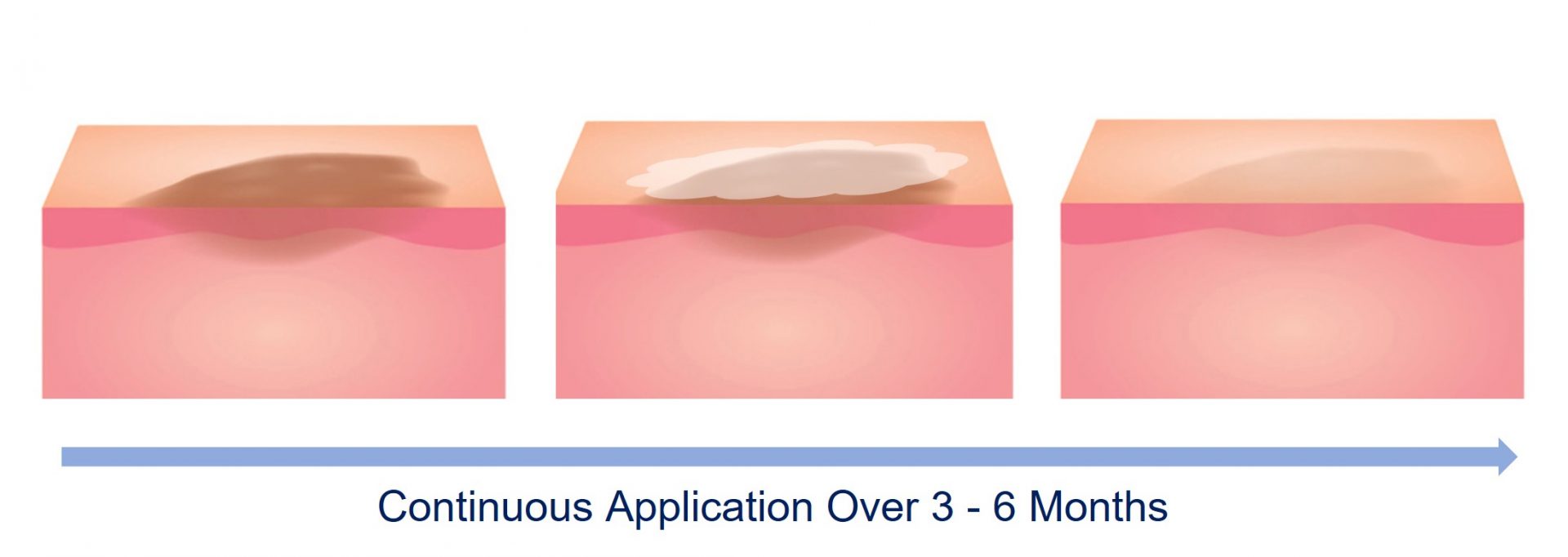
Topical therapy involves the use of tyrosine inhibitors that block the production of melanin and lightening agents and steroids, which increase the efficacy of the treatment and reduce side effects. They increase the formation of new skin cells, which may replace the previously discolored ones.
The most commonly recommended triple therapy includes hydroquinone 4%, tretinoin 0.05%, and fluocinolone acetonide 0.01%.
- Hydroquinone
It decreases melanin production, subsequently has a lightening effect on the skin color. The creams available contain other compounds like vitamin C, glycolic acid, etc., which speed up the action of hydroquinone. However, they should only be applied to the affected areas as they may abnormally lighten the standard skin color when applied.
- Azelaic Acid
Azelaic acid reduces inflammation in the injured area and increases the formation of new skin cells to promote the cell turnover rate. It works on not only post-inflammatory hyperpigmentation but also acne and pimples. Like other creams, it also contains tretinoin and glycolic acid to improve results.
Mild irritation and redness might be associated with Azelaic acid and should be looked out for and reported to the physician in case of severity.
- Retinol
Though retinoids are most helpful in treating acne by increasing the replacement of old cells, it also aids in treating post-inflammatory hyperpigmentation. They exfoliate the skin and reduce inflammation. The creams are only available on prescriptions and include Differin (adapalene), Tazorac (tazarotene), Retinol-A (tretinoin), and Retinol-A Micro. It takes at least a month for the results to show.
Chemical Peels
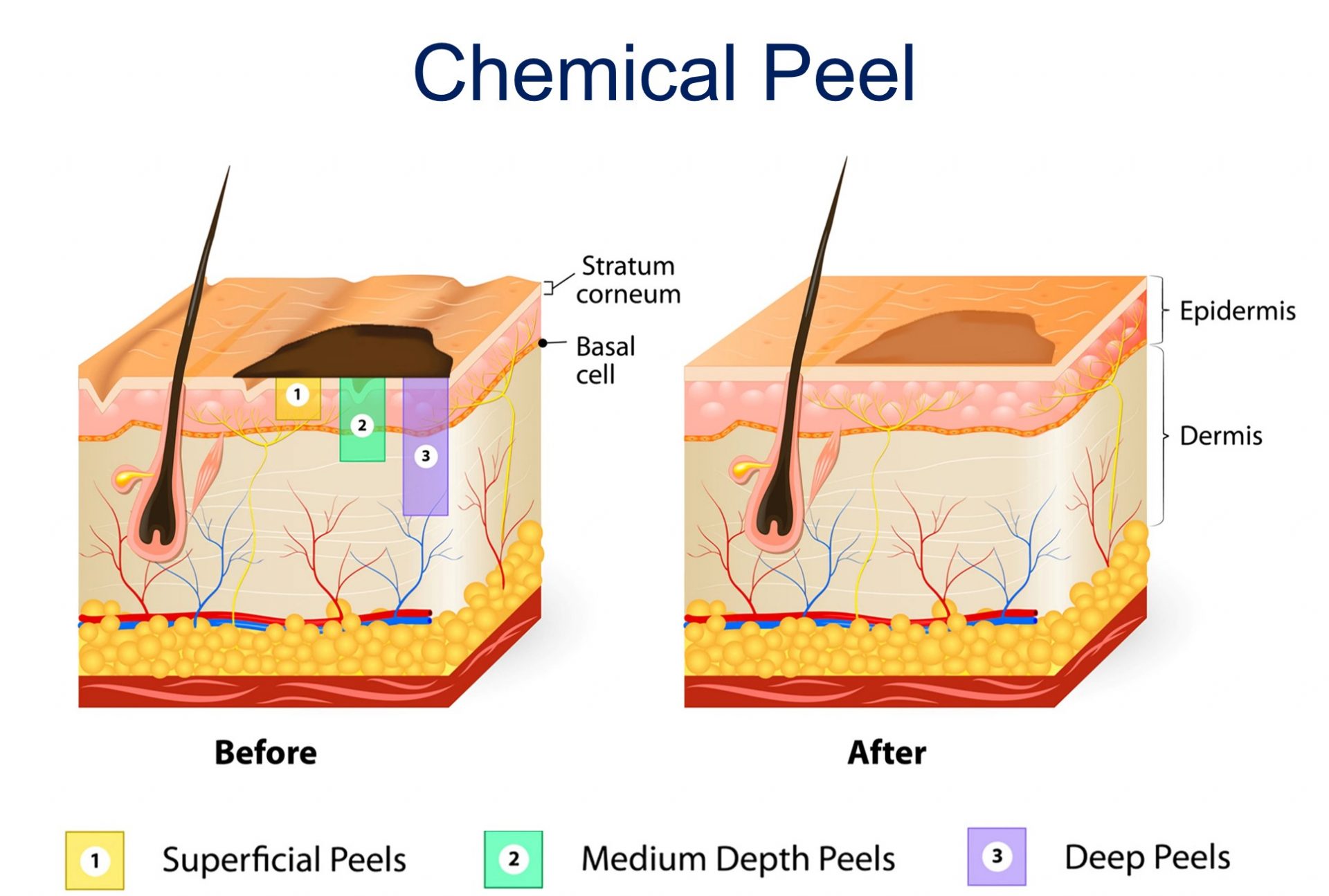
Chemical peels include Alpha Hydroxy Acids (AHA’s), of which the most common ones are glycolic acid, trichloroacetic acid, and salicylic acid. They remove the topmost epidermal layer of the skin that contains excess melanin.
The chemical peels are available in the form of a serum, lotion, and creams which act as natural exfoliators and lighten the skin tone, which aids in treating post-inflammatory hyperpigmentation.
Nevertheless, it should only be used when consulted by a physician as wrong usage may cause skin irritation and hyperpigmentation.
Laser Therapy
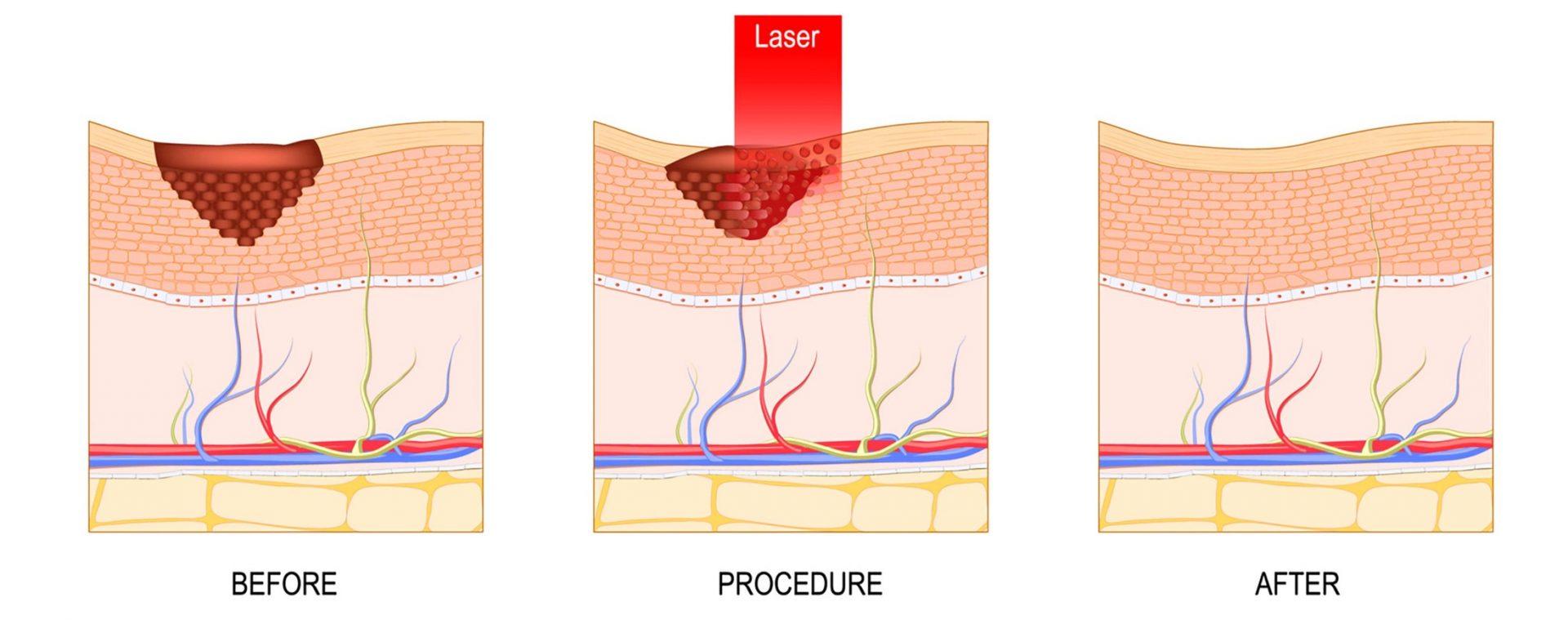
Laser for post-inflammatory hyperpigmentation Singapore is a widely accepted treatment that has got much recognition after many celebrities have talked about it, and it has given promising results.
A laser is a narrow beam of intense radiation that has been projected onto the hyperpigmented area. The laser or light beam is produced by stimulating atoms and molecules, generating and amplifying different wavelengths of light, making a beam. Laser therapy involves the use of different kinds of laser and laser devices.
They target light radiations on the targeted area and work by breaking down the skin layers with melanin pigments. As the laser energy is only absorbed by the pigmented, the surrounding skin remains safe.
These pigment molecules are broken down by the heat generated by the light beam within the cells. They are then destroyed and excreted outside the body after passing through the lymphatic system.
With the dark pigment molecules being removed from the skin cells, the skin color becomes lighter, and the discolored spots are removed. It also resurfaces and rejuvenates the skin that reduces the formation of pigments in the future. As the body’s natural healing mechanism is triggered, the old skin cells are replaced with new ones. The production of natural collagen is also stimulated, which helps achieve a clear, even color skin.
The laser for post-inflammatory hyperpigmentation in Singapore includes Q-switched ruby lasers, Q-switched Nd: YAG lasers, intense pulse light laser, etc. Furthermore, it is also helpful in treating other pigmentary conditions like discolored birthmarks, acne spots, and tattoo marks.
But it is important to get them done only by experienced experts to avoid possible side effects and complications.
Is There Anything That Can Prevent Post-Inflammatory Hyperpigmentation From Getting Worst?
Post-inflammatory hyperpigmentation can be prevented by taking some easy measures like:
- Application of adequate amount of sunscreen whenever going out to prevent possible damage from the sun rays that may trigger the condition.
- Wear a hat whenever you are exposed to direct sunlight.
- Follow the proper skincare routine that is suggested by your doctor.
- Try to keep the acne under control as with every new pimple, the risk of getting a dark spot increase.
- Look for any reaction to any cream or lotion you are using as a treatment.
- Report your doctor whenever you notice any irritation or redness on your skin.
- Consult or book an appointment with a doctor as soon as you see dark patches on your skin to get treatment before things get worse.
Takeaway
This article is a detailed review of all the treatments for post-inflammatory hyperpigmentation in Singapore. It will help you understand how all of them work and what might be the most suitable option for you.
About Dream Aesthetics and Plastic Surgery
Bespoke surgical for cosmetic or medical reasons is what Dream covers to bring out the beauty in every individual. Going beyond the aesthetics and working on physical anomalies are what we value the most in leading our patients to cherish self-improvement and confident lifestyles.
Derived from Associate Professor Vincent Yeow’s long-standing experience performing plastic surgery in Singapore, our treatment plans deliver physical remodelling in our patients’ favour. One of the notable remodellings is droopy eyelid correction. The ptosis surgery used for treatment eventually fixes drooping eyelids, improves vision and enhances appearance.
Most importantly, as a trustworthy plastic surgery and aesthetic clinic, we treasure positive and natural outcomes for each individual. We will ensure to deliver the beauty refinement of your dream without compromising your safety and privacy.

